Landing boards
I’ve bought and used a number of Abelo poly hives this season. I’m going to review these once I see how the colonies perform overwinter. However, one of their ‘features’ is an integral landing board that forms part of the removable floor (colonies 1 and 3, facing, below).
Landing boards are great. They provide a large flattish or gently sloping ramp that leads to the hive entrance. There’s something mesmerising about watching heavily-laden foragers performing an inelegant ‘tail-down’ crash-landing several inches short of the entrance, righting themselves, and marching purposefully forwards into the gloom of the hive.
During a heavy nectar flow this happens dozens of times a minute, with a strong colony making about 35,000 foraging trips per day. It’s great to rest your elbows on the hive roof, peer over the top and watch hundreds of foragers bringing the nectar back, 40 milligrams at a time.
Integral landing boards and DIY
Landing boards must be popular with other beekeepers as well as they regularly feature in commercially available hives. The Abelo implementation is relatively neat, projecting perhaps 5cm from the front face of the hive.
Other variants are rather more in-your-face. The version in the image on the right is on an early variant of a Maisemore’s poly National hive (I think – please correct me if I’m wrong – Matt Harris helpfully corrected me here … they’re Paynes hives). Frankly, I think it looks pretty ghastly, but at least returning foragers could crash-land some distance away and still walk the last few hundred yards unimpeded ?
If your hives are cedar you can easily add a flat or sloping landing board to the front of the floor. If you’re going to do this use reasonable quality wood – the exposed edge of a strip of plywood tends to delaminate pretty quickly. Alternatively, build something cheap, functional and easily replaceable from Correx.
The bee shed houses up to 6 colonies, each with a simple short ‘tunnel’ ending in a 1-2″ aperture in the vertical shed wall. I’ve built simple Correx landing boards on these and they’ve performed extremely well over the last two years. Each piece of folded Correx is a distinctive colour to aid the bees returning to the correct hive.
If you take advantage of abandoned ‘For Sale’ signs you can get Correx in a wide range of contrasting colours which saves having to spray paint them before use.
Take a stand
Landing boards don’t need to be attached to the hive front or floor. Some of our early research colonies were housed in lovely cedar hives built by Pete Little of Exmoor Bees & Hives. He provided stands with integral sloping landing (‘alighting’) boards. These are great, though they extend the need for compatibility from the hive itself to the stand as well.
Nice, but not needed
Despite the pleasure to be gained from watching bees return to the hive entrance, landing boards aren’t really necessary and they can get in the way.
Feral colonies generally don’t have the benefit (or need) of a nicely sloping landing board. They cope admirably with a simple unadorned hole through the soffit, with nothing more than the painted boards to cling to … upside down. Crevices or holes in trees, or the church tower, probably have ‘grippy’ surfaces that aid arrival, but there’s no evidence they’re selected on any criteria other than the volume and overall location of the potential new ‘home’.
I used to build my preferred floor – the kewl floor with a mouse-proof and wasp-resistant ‘L’ shaped underfloor entrance – with a shallow integral Correx or plywood landing boards.
However, over time these all got damaged in transit, or I got sick of bees wandering underneath the floor if they landed on the stand, not the landing board. I’ve recently described a modified entrance to these kewl floors, again made from Correx, that is a marked improvement.
There’s a very short video on the page describing these modified entrances showing bees landing and entering the hive perfectly well.
Damaged in transit … or in a pile (up)
The main problem with any sort of protruding landing board is that, by definition, it protrudes.
It therefore gets in the way.
It makes strapping hives up during transport more difficult and means the hives don’t stack together quite as neatly. I only move small number of colonies about, so it’s the inconvenience, not the space, that is the issue.
Similarly, during the winter or after uniting colonies in the season, spare floors and other pieces of kit need to be neatly stacked out of the way. Protruding landing boards prevents them being placed on the top of the stack (because the roof fouls the landing board) and – in certain orientations – stops stacks being pushed close together.
As an aside, you probably don’t want these floors at the bottom of the stack. Firstly, you’ll inevitably need one when putting together a new hive and it’s easiest not to have to remove the entire stack to access the floor. Secondly, unless blocked off with a sheet of polythene or Correx, they’ll allow wasps and bees access to the stack … or even encourage a swarm to move in.
So … over the years landing boards on my hives have evolved or, more accurately, atrophied. They’re now only present on the outside of the bee shed, on purchased poly hives and, in a rather truncated version, at the cavernous mouth of the Thorne’s Everynucs that I favour.
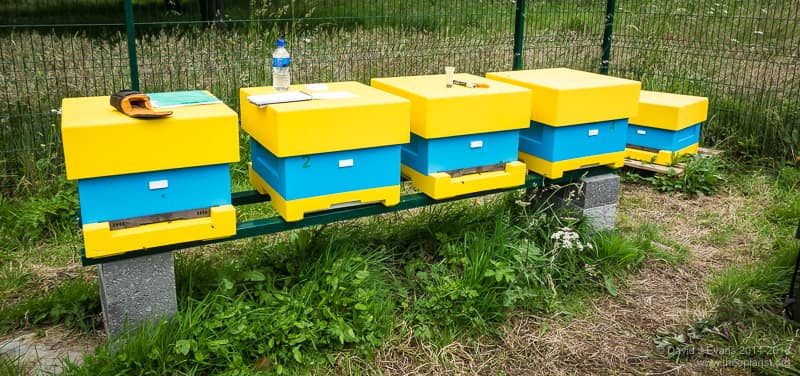
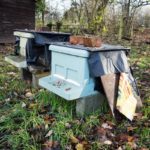
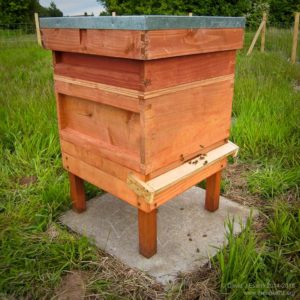
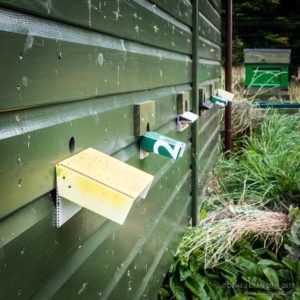
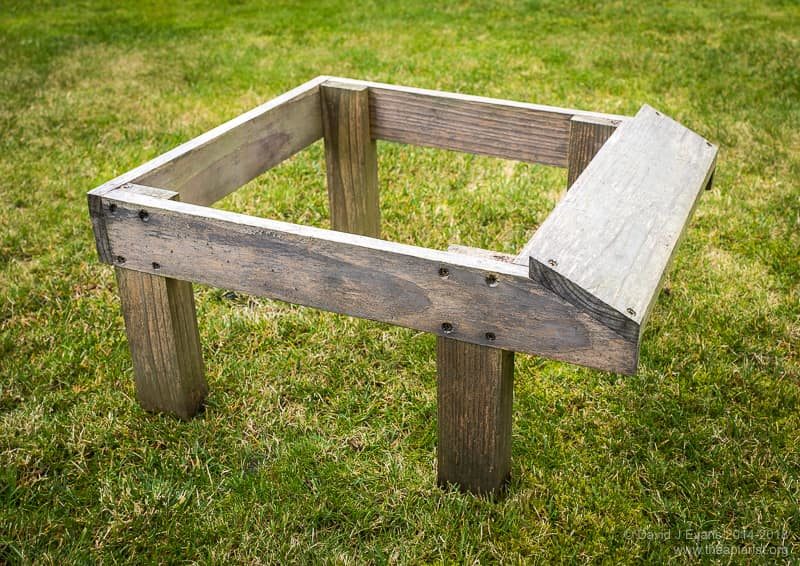
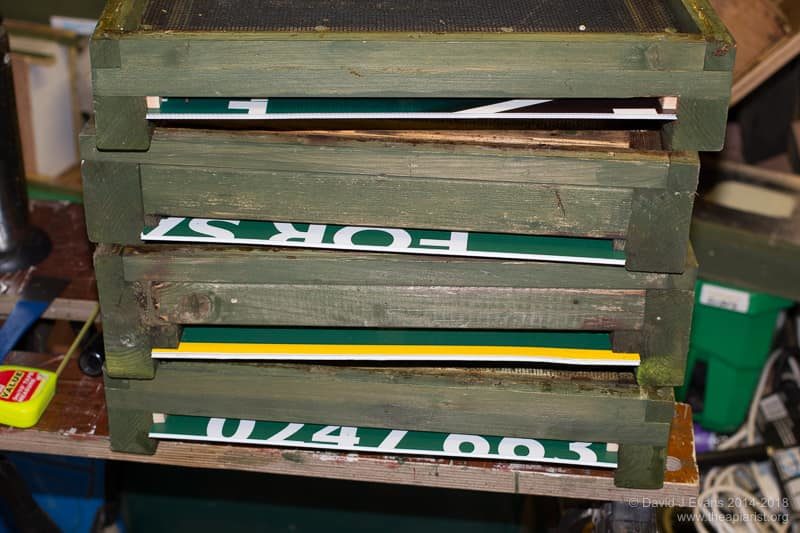
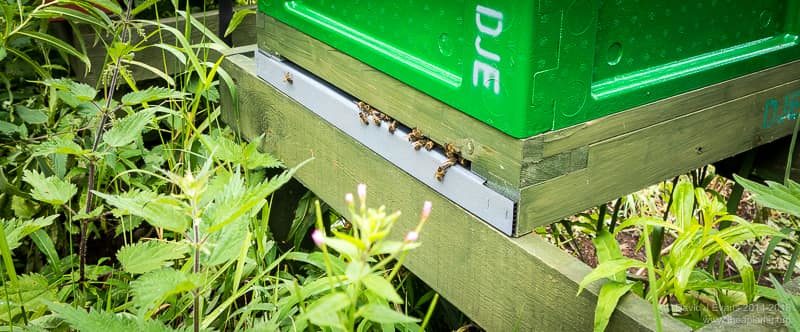
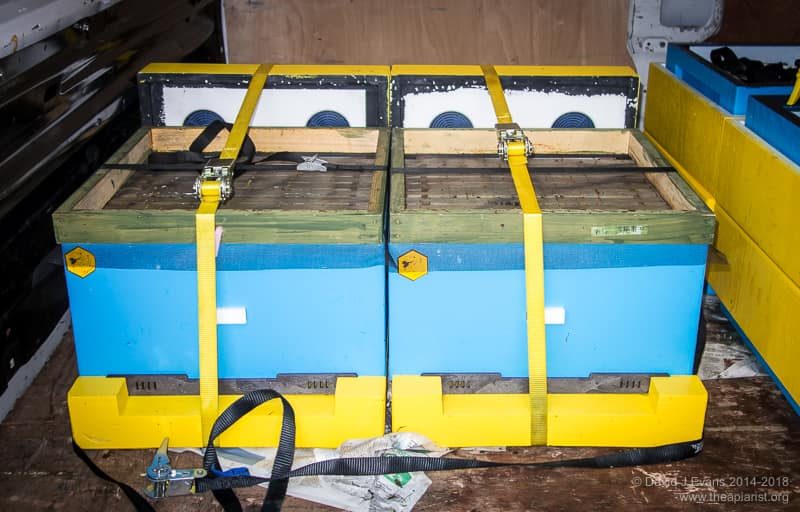
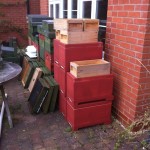

Join the discussion ...